
Presentation Name
griff.w98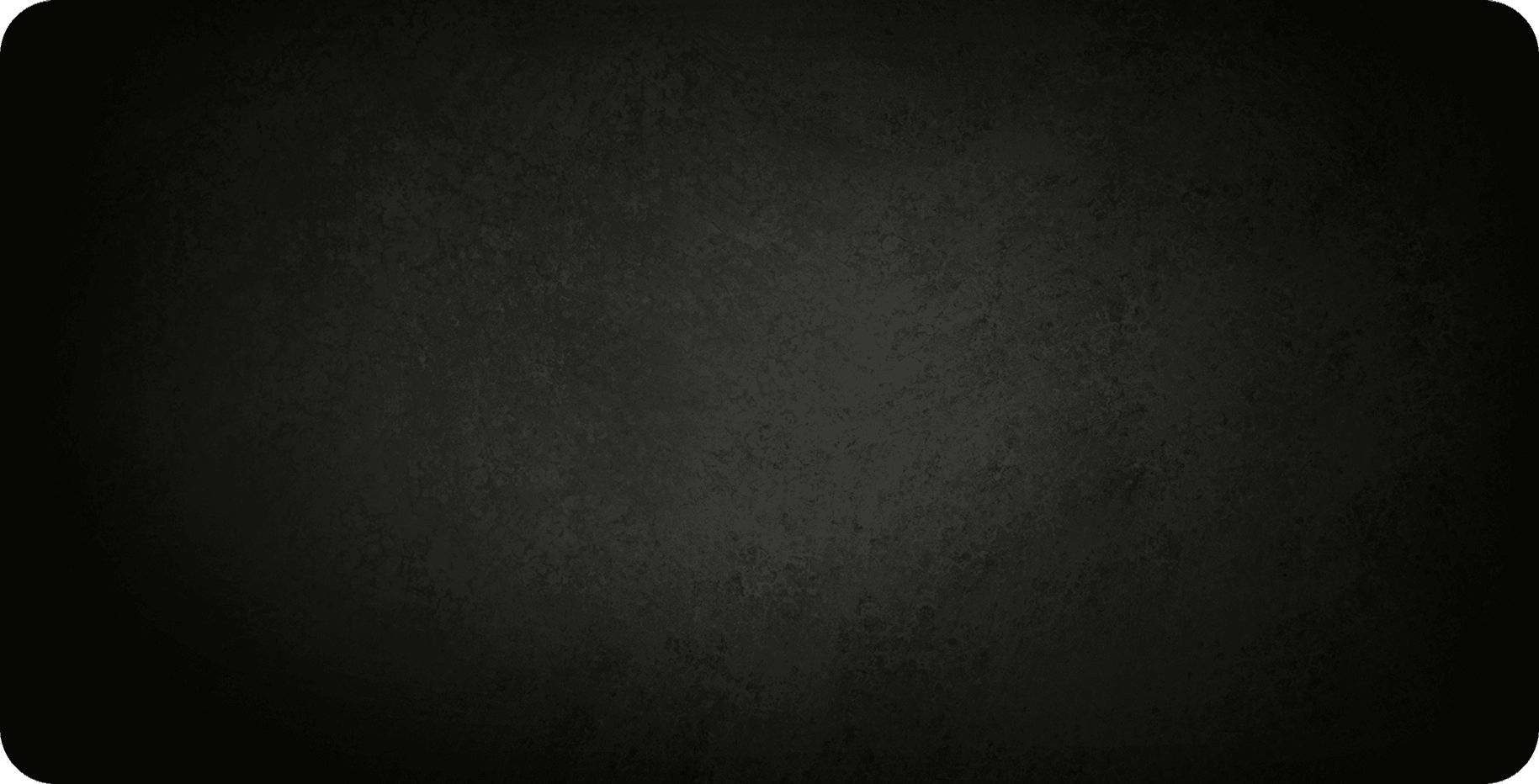


Opening Slide
In what ways does your film trailer challenge forms and conventions of real film trailers?
 Question - Leonardo DiCaprio
Question - Leonardo DiCaprioFilm Title

The title of my film is 'Grave Born' this is following the connotations of the themes within the film trailer which is something that real films do: The title of my film trailer follows the conventions of real film trailers because from looking at real film trailers I have noticed that the film title tends to either be a juxed opposed name to the themes of the film or programme such as 'Happy Valley' or connote the themes of the film itself. I have put the name of the film at the end of the trailer because this enables the audience to see the film trailer and then be able to remember the name of the trailer, it is much more commonly seen at the end of the trailer in real film trailers so it also enables the trailer to be more realistic.

Font style
The font I have used intends to enforce continuity across the poster, film magazine cover and the trailer so each of the elements of the promotional package can be recognised together and evoke the same themes and feelings to the audience. The font style is representative of the themes and styles within the trailer, so this follows the conventions by being able to reflect the style and genre within the film.
 Title - Type B
Title - Type BSetting and Location
The locations used in my trailer are intended to both portray the feeling of a gritty, dramatic and bleak atmosphere, the locations in the first shot are more scenic, which is juxed opposed to the following locations and the themes of the trailer, although the use of graves in the shot evoke an eerie feeling to the trailer and is denoted from the name of the film. The shots of urban areas portray the bleak atmosphere within the film and allow some background as to the time period of the film and some information about the key protagonist's lifestyle, the use of urban areas follows the conventions of a social realism films because they are based in realistic, everyday locations, often in urban and derelict/run down locations, so these locations clearly follow the conventions of a social realism film. I also used woodland in some parts of the trailer because they are conventional in being an area of secluded conflict between the protagonist(s) and antagonist(s) I think these locations work effectively because they are quiet and out of the way. They are somewhat sinister locations and reflect the themes of the film.

Setting and Location
I think The locations used effectively portray the genre and themes within the film trailer because I have taken inspiration of the locations from real social realism films and used similar locations in my trailer and I feel that the locations are recognised with the themes within the trailer






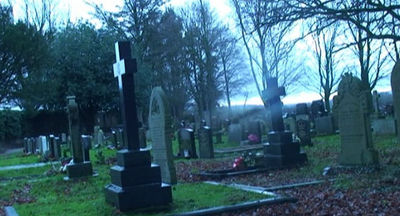
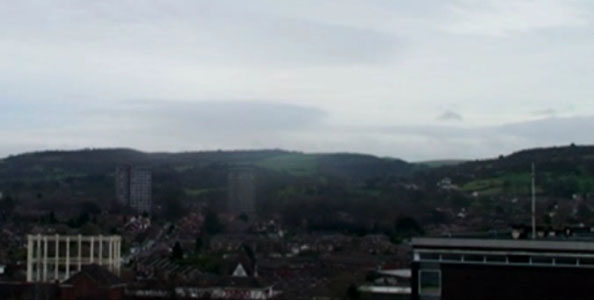
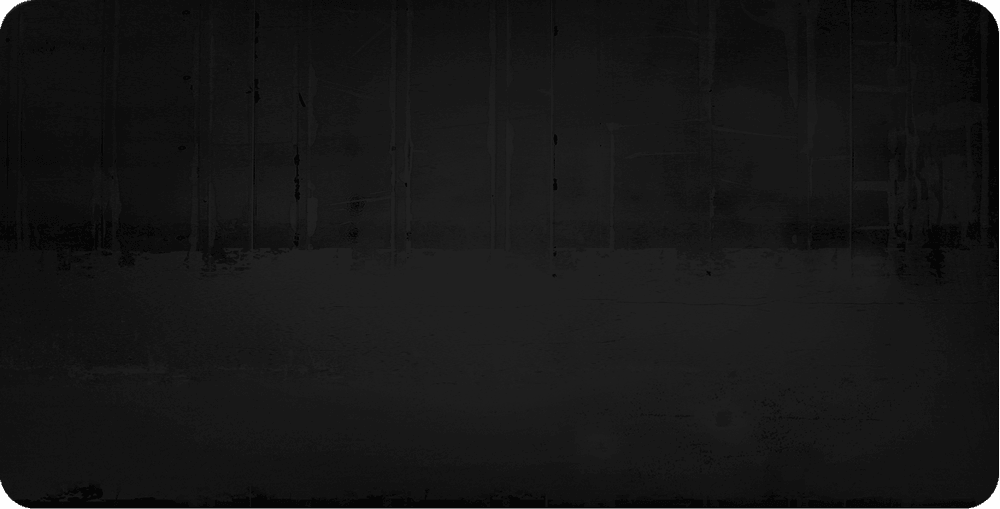 Title - Type A
Title - Type ACostume
I intended to use realistic, normal, everyday clothing in my trailer because this is conventional of a social realism film. The use of a parka coat characterised the key protagonist as it was the item of clothing he was seen wearing the most, it is supposed to reflect the time of year being winter/autumn. The costume in my film trailer is very simplistic and doesn't challenge the forms and conventions of real social realism film trailers. I also used some fake blood to show that the key protagonist had been badly hurt physically.

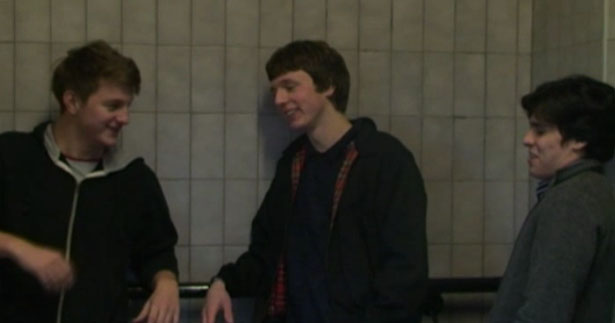
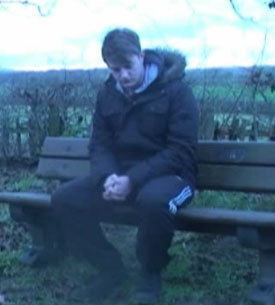
Props.
Props used included: A blood stained shirt, a fire and a note. The blood stained shirt was used to imply some form of mystery and conflict between characters within the film, it is there to raise questions within the audience and entice them to make the audience want to know more about why this has happened. The note is to add some background to the story, the note is there to inform the audience that he is possibly now effectively an orphaned child after his Mum leaves him and adds to the bleak themes within the film. The fire is there to add an element of drama in the fact that the key protagonist is burning the shirt as if he is trying to cover something up, this makes the audience feel as if he has done something bad.
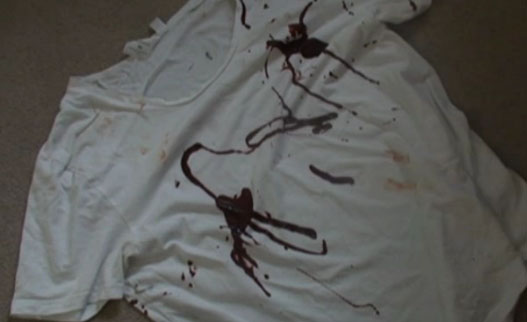
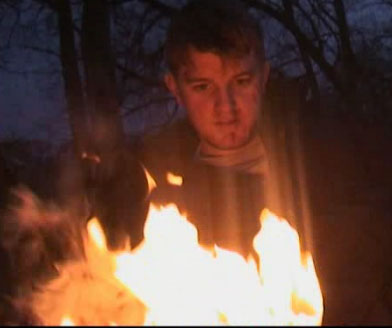
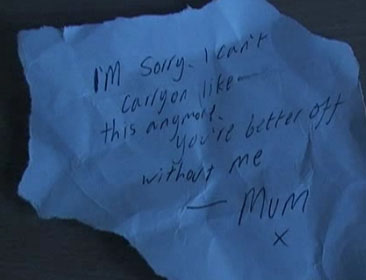
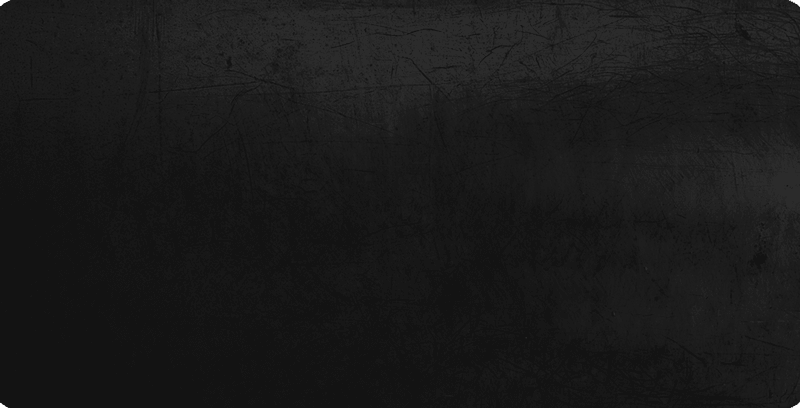 Dialogue
Dialogue Editing.
I took a very simplistic approach to my editing because social realism trailers seem to be more about the themes that are portrayed to the audience, these kind of trailers all use very simplistic editing such as the 'This is England' trailer to the right. I used simple effects such as dip to black, fading out music, zooms and fade to white. I used dip to black to make the editing more clean and show a change of time in parts. The dip to white at the end of the trailer is used to imply a nauseating feeling that the key protagonist is having after being kicked in the face, it also teases the audience by going to a blank flash at the climax of a fight scene. I have tried to edit the film to fit the music with the areas of most drama being the areas where the music is more dramatic and loud. Overall the editing is very simplistic and conventional of a social realism film trailer.
Camera-Work
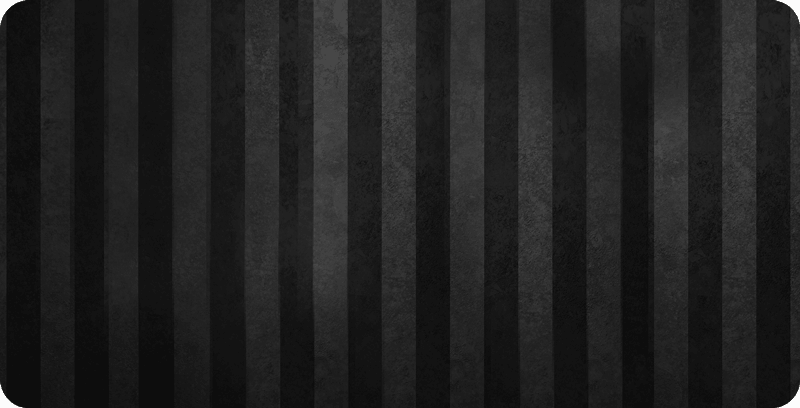 Question - Breaking Bad
Question - Breaking BadThe camera work used in my film trailer is unconventional in areas for example, there is areas of conversation that don't use shot-reverse-shot, I did this because I wanted all characters to be in shot to emphasise the equilibrium in the trailer, although, I think the use of shot-reverse-shot could have been effective in showing some reaction within the key protagonist. The camera work overall is fairly simplistic and conveys the feeling of a film trailer effectively, I used a range of shots to make it seem as realistic as possible and used different angles to emphasise emotions or status for example, I used a low angle, POV shot when the antagonist appears to kick the key protagonist in the face because it makes the audience believe that the camera is coming from his point of view and the angle used assets the antagonists' dominance over the key protagonist. I also used an interior shot of a car which makes it seem like the two characters in the shot are stalking the key protagonist. The camera-work is simplistic and isn't supposed to be artistic like it would be in a film noir genre for example and it is conventional of camera work used in social realism films.
 Cinema - Image Place Holder
Cinema - Image Place HolderHow the genre is conveyed.
The genre is conveyed through the use of the elements I mentioned in previous slides, but also through a number of other elements. The mise-en-scene used in the trailer is very important because it shows what the time period is, where it is set and it also portrays some themes within the trailer. The use of establishing shots within the trailer and other items seen within the trailer help portray the genre in terms of mise en scene. The use of dialogue also helps convey the genre because this enables the storyline to come across and we can get an insight of the characters' personality. The mid 2000's social realism theme can be acknowledged by what is seen on screen. It doesn't stray away from the themes and conventions of a social realism trailer so the genre can be easily identified.
 Title - Type B1
Title - Type B1Unique selling point
Despite religiously following the themes and conventions of social realism films in my trailer, I think my film trailer still has a unique selling point. Firstly, social realism is a popular film genre, but it is one that has been neglected by modern day cinema, they are rarely seen as new films coming out now, I think that it would compete well in a cinema hypothetically because it is a less commonly seen genre these days despite being popular among the public. Secondly, this trailer is quite mysterious in that it doesn't give away too much about the storyline of the film, I think this is interesting because it has moment that entice the audience and makes them want to see more. The films I have taken inspiration from such as Kidulthood and This is England have proved very popular in British cinema, so I think this would be succesful in the UK.
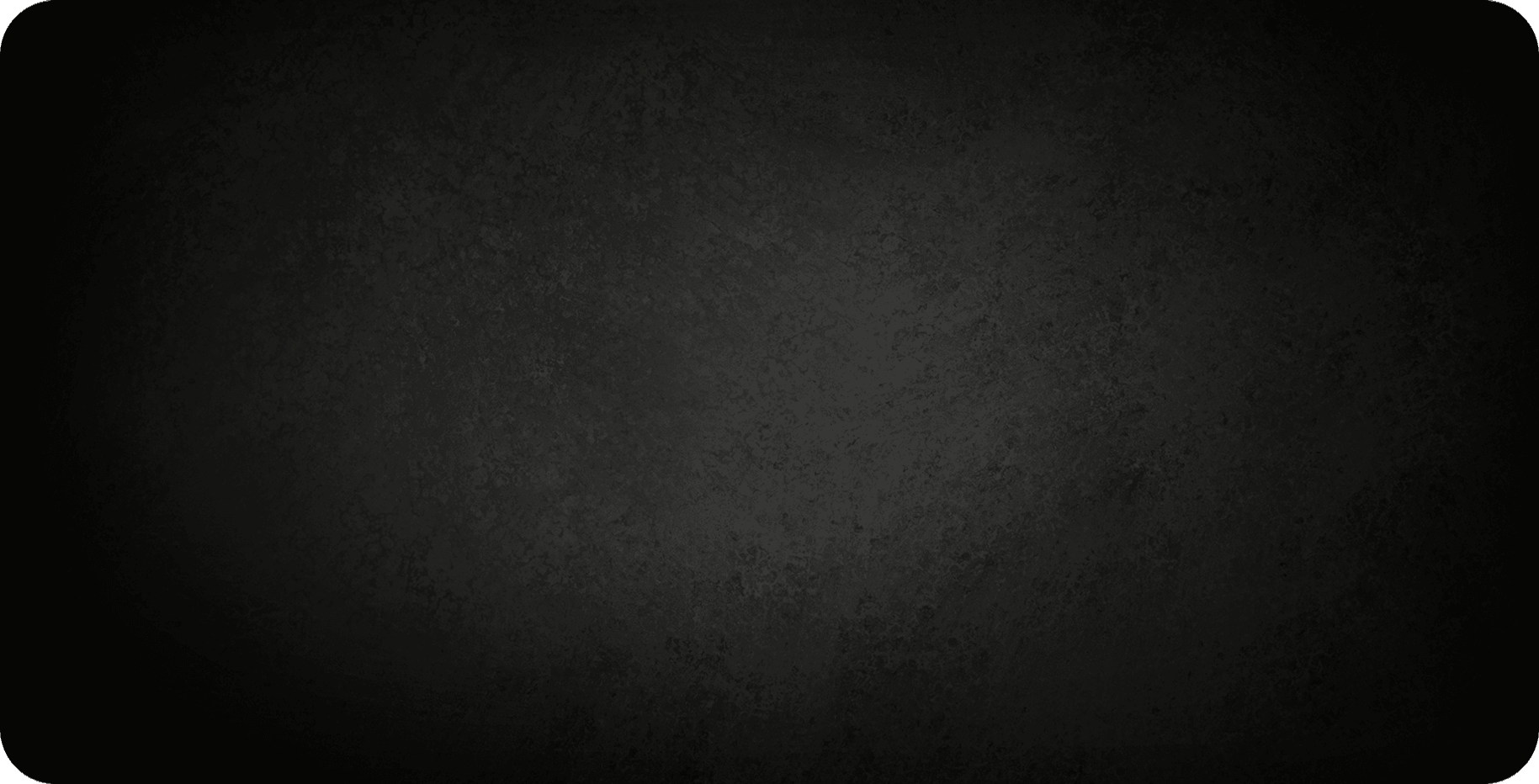 Video - Hair Stand on End
Video - Hair Stand on EndHow does it follow a three act structure?
Referring back to the blogpost 'Narrative structure of trailers' I feel as if my trailer does follow a three act structure: There is an exposition in the beginning of the trailer; the voice over gives us background information about the key protagonist and the note provides information on the character's predicament. The trailer then goes on to show a complicating action of the character being confronted and manipulated by the other two main characters as he faces an obstacle before going on to the final climax where the key protagonist gets himself into a worsened position where he confronts the opposition and the energy within the trailer climaxes. So my trailer is conventional as it follows a clear 3 act structure, which is something I've achieved by looking at how other film trailers use a three act structure and looking at information on filmmakermagazine.com
filmmakerm...gazine.com
Delete
Permanently from your library.
Cancel
Delete
Delete
Permanently remove from your library.
Cancel
Delete
Download
;
Save to view offline
Emaze
Play in
Emaze Viewer
Download Viewer
HTML
Play in
browser zipped format
Video
MP4 movie format
PDF
Static
format
Your emazing video is on its way!
An email will be delivered to .
Please allow 30 minutes to 6 hours time depending
upon the size of the video. Thank you for your patience.
Duplicate
Add a copy to your library.
Cancel
Duplicate
;
Print Presentation
landscape
portrait
Cancel
Print pdf
Print


Compatibility Mode
This presentation has been simplified to fit your browser.